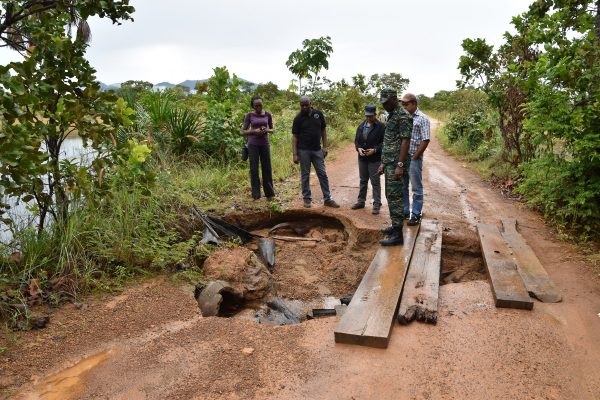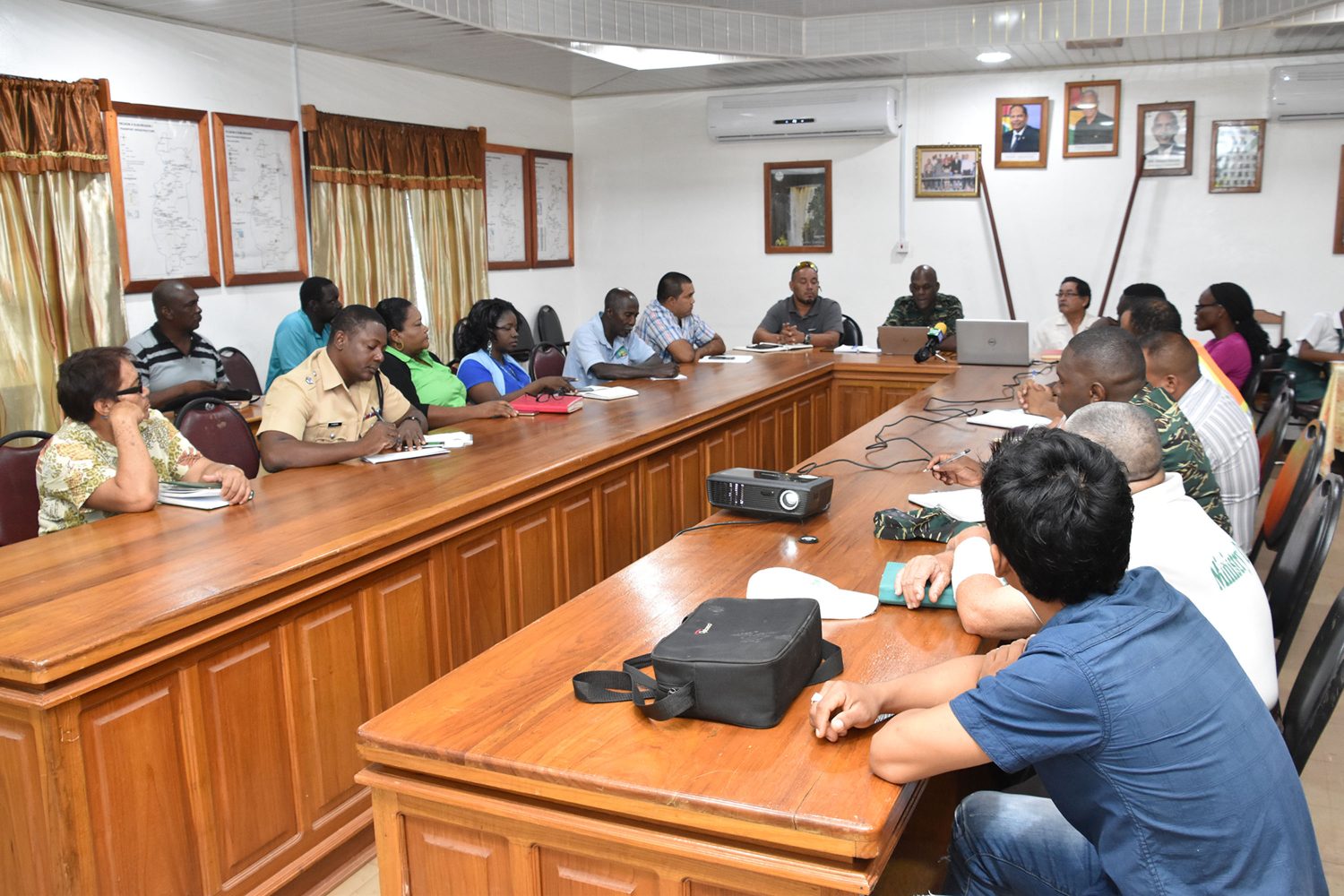Floodwaters in the Rupununi have begun to recede in most areas according to Regional Chairman Brian Allicock.
A statement from the Ministry of the Presidency yesterday said that Allicock has reported that the only village which remains affected is Karasabai, located in the South Pakaraimas.
According to the statement he explained at a special meeting on the issue yesterday that reports, from several sources during the day indicated that the water has receded in the areas which were previously affected, including Aishalton and Lethem.
“In the access road, beyond the Rupununi crossing, the water has already receded and I was told by a contractor from Lethem that he was leaving for Aishalton because he can now take in his machinery for the construction works he has to do in there. The other problem is the culvert by Aishalton, but the contractor will create a bypass there so vehicles can move over. In the Lethem area, the water is receding and I am happy about that because even though we have people in the low-lying areas, only three families were evacuated from the area. We are happy because the water is going away and the weather report from Brazil is very helpful because we see that there is no rainfall in the Amazon area,” he said.
The statement further explained that on Monday, Deputy Toshao Andrew Albert Junior of Karasabai noted that the main concern shared by the six villages and one satellite community in that area is the fact that the floodwater on the main access road has resulted in a total cut-off for villagers preventing access into and out of the village and to Lethem and Georgetown.

He added that a request had been made to the RDC for a boat and engine to transport residents, particularly schoolchildren and emergency cases.
According to Allicock the region has responded to this request since they recognise that Karasabai remains affected since the flooding is caused not only by the heavy rainfall or the ‘wet’ season, but the water running off from the mountains and from neighbouring Brazil. The Ireng River, he said, remains high.
“The only other place that is suffering at the moment is Karasabai in that the water is still coming down from the mountains and the Ireng. Even though the Takutu is receding, the Ireng is still bringing in water and we are putting in place a boat and engine to transport people to the El Globo Landing or Good Hope landing,” the statement quoted the chairman as saying.
He also noted that the weather conditions have affected the Georgetown to Lethem roadway, making it almost impossible to traverse consequently the Regional administration has awarded a contract for the upgrading of the roadway from Annai to Lethem, while the Government has budgeted for feasibility studies and detailed designs for the first phase of the Linden-Lethem road, covering the section from Linden to Mabura Hill, thereby improving access to the communities.
The meeting which was held at the Regional Democratic Council (RDC) Boardroom included the Director General of the Civil Defence Commission (CDC), Lieutenant Colonel Kester Craig, the regional administration and officials from various Ministries and Agencies, including the Ministry of Public Health, Ministry of Public Infrastructure, Ministry of Agriculture, Ministry of Communities, Central Housing and Planning Authority (CHPA), the Guyana Water Incorporated (GWI) and the Mayor and Town Council, among others.
Each agency is providing assistance to the communities affected. The Ministry of Agriculture has dispatched teams from the Guyana Livestock Development Authority (GLDA) to conduct on-the-ground assessments in the affected villages and to lend assistance where necessary, while the Ministry of Public Infrastructure will be examining the affected roads and culverts to determine the extent of damage and corrective actions that must be taken.
The Ministry of Public Health is maintaining contact with the regional health facilities to ensure that there are adequate medical supplies in stock to treat persons affected with water-borne or vector-borne diseases and the CDC continues to monitor the situation in the region and will provide support as it becomes necessary.





